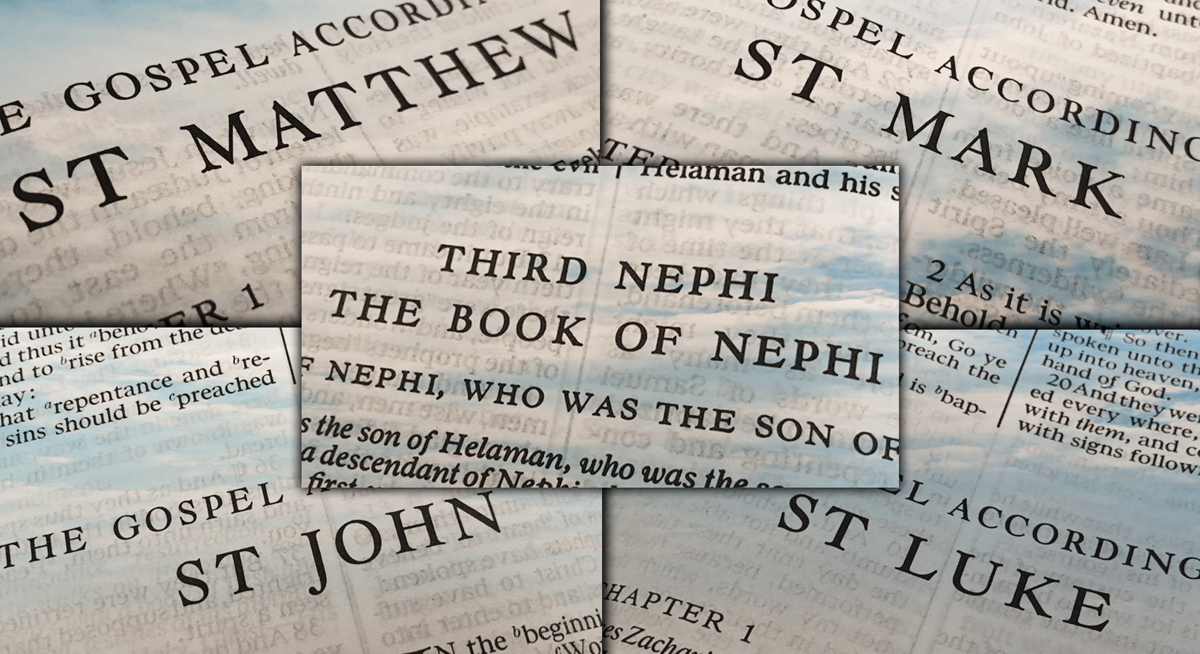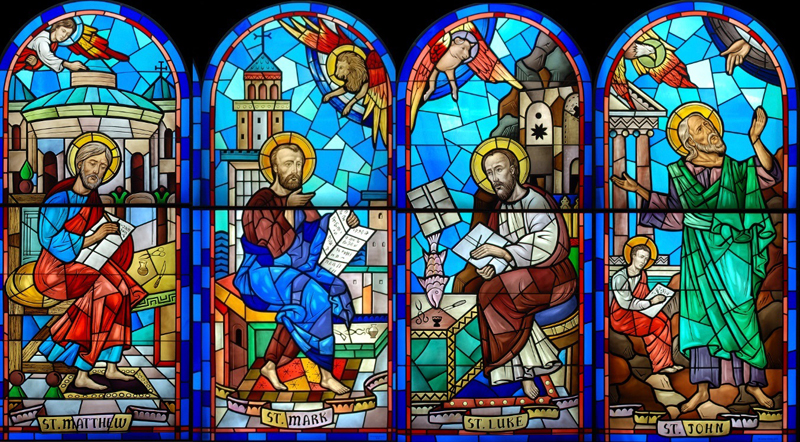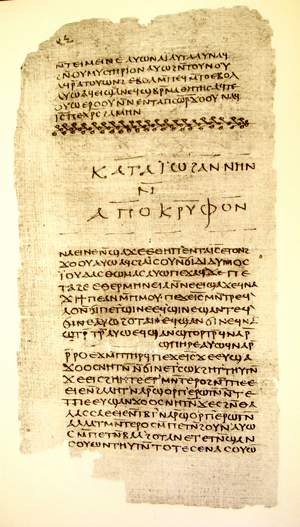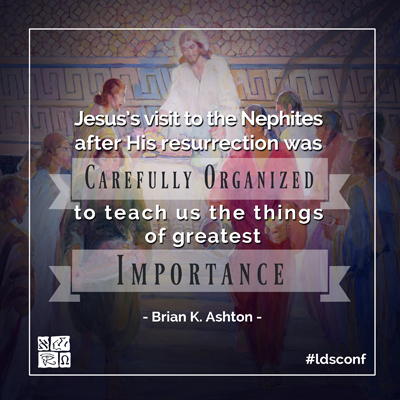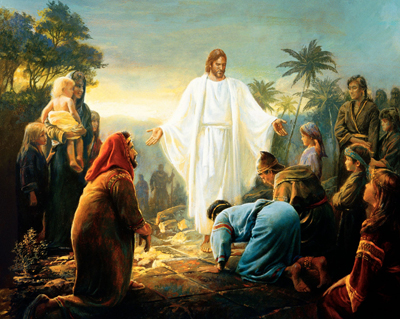You are here
Why Is 3 Nephi Sometimes Called the “Fifth Gospel”?

3 Nephi 27:21
The Know
While describing the contents of the Book of Mormon in a First Presidency message in 2004, President Gordon B. Hinckley said, “It contains what has been described as the fifth Gospel, a moving testament of the New World concerning the visit of the resurrected Redeemer on the soil of this hemisphere.”1
In April 1904, B. H. Roberts mentioned that some debated whether “fifth Gospel” was an appropriate designation of 3 Nephi, demonstrating the idea originated at least a century earlier than President Hinckley’s use.2
Gospel literally means “good news,” and so in one sense 3 Nephi is a “gospel” because—along with Matthew, Mark, Luke, and John—it declares the good news of Christ’s Atonement and resurrection.3 As a literary genre, though, gospel is somewhat difficult to define.4 Broadly speaking, gospels are texts which focus on the life, teachings, and miracles of Jesus.
Beyond the four canonical gospels, there are additional early Christian texts dubbed “gospels,” such as the Gospel of Mary, the Infancy Gospel of James, the Gospel of Nicodemus (The Acts of Pilate), the Gospel of the Ebionites, the Gospel of the Hebrews, the Gospel of the Nazareans, the Gospel of Thomas, and the Gospel of Philip. Some of these deal mostly with the post-resurrection acts and teachings of Christ, similar to 3 Nephi.5 Hugh Nibley compared the 3 Nephi account with many of these early Christian post-resurrection traditions and felt that 3 Nephi fit so naturally within that body of literature that “with the title removed, any scholar would be hard put to detect its irregular origin.”6
Nibley’s work might suggest that 3 Nephi is a “gospel” within the meaning and tradition given to that genre by early Christians. Yet the designation as a fifth Gospel carries greater weight, suggesting it belongs within the same class as the four canonized Gospels, which, as New Testament scholar Christopher M. Tuckett observed, are quite different from the non-canonized gospels.7
The four Gospels are of course somewhat different within themselves, but a number of points neatly suggest that 3 Nephi has a place alongside them. Some examples include:
- Much like Matthew and Luke, 3 Nephi begins with the fulfillment of prophesied signs of the Savior’s birth (3 Nephi 1; cf. Matthew 1–2; Luke 1–2).8
- Matthew, Mark, Luke, and John all mention John the Baptist, the forerunner sent to prepare the way for Christ in the Old World (Matthew 3; Mark 1; Luke 3; John 1). 3 Nephi likewise records the ministry of a forerunner who baptizes among the Nephites—the prophet Nephi, son of Nephi (3 Nephi 7:15–26).9
- Just as Jesus did, Nephi cast out devils, healed the sick, and even raised his brother from dead. As the Savior’s New World forerunner, Nephi preformed his miracles “in the name of Jesus” (3 Nephi 7:19–22). Thus, as New Testament scholar Krister Stendahl put it, 3 Nephi “transposes the ministry of Jesus into a ministry of Nephi, a man of miracles in the name of Jesus.”10
- Matthew, Mark, and Luke all record the Father bearing witness of the Son,11 as does 3 Nephi (3 Nephi 11:7).
- Just as all four Gospels document the death and crucifixion of Jesus,12 3 Nephi records the fulfillment of prophesied signs confirming the Savior’s death and three days in the tomb (3 Nephi 8–10).13 The 3 Nephi account may even help clarify the timeline of Christ’s entombment, since the account of the destruction adds information about the timing and duration Christ’s death.14
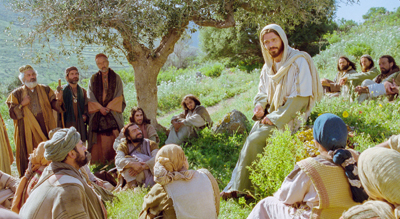 Just as the New Testament Gospels record the teachings of the Savior during His earthly ministry, 3 Nephi records the teachings of the resurrected Lord.15 This includes the Sermon at the Temple (3 Nephi 12–14),16 which parallels the Sermon on the Mount (Matthew 5–7) and Sermon on the Plain (Luke 6:17–49), the clarification of teachings recorded in John about His “other sheep,”17 and the institution of the sacrament.18
Just as the New Testament Gospels record the teachings of the Savior during His earthly ministry, 3 Nephi records the teachings of the resurrected Lord.15 This includes the Sermon at the Temple (3 Nephi 12–14),16 which parallels the Sermon on the Mount (Matthew 5–7) and Sermon on the Plain (Luke 6:17–49), the clarification of teachings recorded in John about His “other sheep,”17 and the institution of the sacrament.18- The Nephite record stands as a fifth witness of the bodily resurrection of Christ (3 Nephi 11), in a way that exceeds the all other Gospels, canonical19 and non-canonical.20
Several more points of comparison could be made.21 Yet just as the New Testament Gospels have key differences that ought to be noticed, 3 Nephi is different from the other four gospels in important respects. As LDS gospel scholar Andrew C. Skinner noted, the Savior “said and did things of which the four Gospels have no record, and for which 3 Nephi is our treasured source.”22 Key among these are the post-resurrection nature of the Savior’s ministry, and the emphasis on the temple in Christ’s teachings.23
The Why
Many have attempted to imitate the gospels, and have failed miserably.24 Yet 3 Nephi offers an authentic fifth Gospel which “complements and supplements the four biblical Gospels.”25 As Skinner pointed out, it is unique among Gospel accounts in possessing material “reviewed and edited by the Savior himself.”26
In the October 2016 General Conference, Brother Brian K. Ashton similarly taught, “Jesus’s visit to the Nephites after His Resurrection was carefully organized to teach us the things of greatest importance.”27 Thus, disciples of Christ can be confident that “3 Nephi contains those matters that the Savior himself felt were and are most important.”28
In July 1838, the Prophet Joseph Smith taught, “The fundamental principles of our religion are the testimony of the apostles and prophets concerning Jesus Christ, that he died, was buried, and rose again the third day, and ascended up into heaven.”29
President Ezra Taft Benson taught that the Book of Mormon, “is the keystone in our witness of Christ,”30 a point Elder Gary E. Stevenson reiterated recently.31 While the entire Book of Mormon is saturated with various testimonies of Christ, the Gospel of 3 Nephi is the preeminent reason that the Book of Mormon stands as a keystone witness of Christ’s divinity.
By detailing the post-resurrection appearance and ministry of Jesus Christ in the Americas, “3 Nephi stands as an independent witness of the linchpin doctrine of the entire Christian faith—the bodily Resurrection of the Lord Jesus Christ.”32 It is a Gospel, not of the mortal Jesus, but of the risen Lord.33 In a time of ever increasing skepticism about who Jesus was and who He claimed to be, the Book of Mormon, as LDS author Michael R. Ash observed, “is a unique second witness to the divinity of Christ and the reality of the Resurrection.”34
“Truly, 3 Nephi is worthy of the designation Fifth Gospel—the capstone of all Gospel accounts,” Skinner concluded.35 It is a Gospel the world desperately needs now—a Gospel which has the potential to soften hearts, change minds, and convert people unto the Lord. Skinner resolved, “For this Fifth Gospel we should be forever grateful and perhaps much more active in filling the earth with its contents.”36
Further Reading
Andrew C. Skinner, Third Nephi: The Fifth Gospel (Springville, UT: Cedar Fort, 2012).
Monte S. Nyman, Book of Mormon Commentary, 6 vols. (Orem, UT: Granite, 2003), volume 5.
John W. Welch, Illuminating the Sermon at the Temple and Sermon on the Mount (Provo, UT: FARMS, 1999).
Hugh Nibley, The Prophetic Book of Mormon, The Collected Works Hugh Nibley, Volume 8 (Salt Lake City and Provo, UT: Deseret Book and FARMS, 1989), 407–434.
- 1. President Gordon B. Hinckley, “Four Cornerstones of Faith,” Ensign, February 2004, online at lds.org. See also President Gordon B. Hinckley, “The Cornerstones of Our Faith,” Ensign, November 1984, online at lds.org.
- 2. See B. H. Roberts, Conference Report, April 1904, 16.
- 3. Gaye Strathern and Andrew C. Skinner, “Introduction,” in Third Nephi: An Incomparable Scripture (Salt Lake City and Provo, UT: Deseret Book and Neal A. Maxwell Institute for Religious Scholarship, 2012), viii: “All five Gospels testify that Jesus is the Christ, the Son of the living God. They are Gospels because they all declare the ‘good news’ that the atonement of Jesus Christ makes salvation available to all who come unto him with faith, repentance, baptism, the sanctifying power of the Holy Ghost, and by enduring to the end (3 Nephi 27:13–21).” Interestingly, according to Christopher M. Tuckett, “Within first-century Christianity, the term ‘gospel’ was used to refer to the Christian kerygma centering on in the death and resurrection of Jesus.” See Christorpher M. Tuckett, “Introduction to the Gospels,” in Eerdmans Commentary on the Bible, ed. James D. G. Dunn and John W. Rogerson (Grand Rapids, MI: Wm. B. Eerdmans, 2003), 989. In 3 Nephi 27:13–15, Jesus likewise defined gospel as centering on His death and resurrection, thus making the Book of Mormon usage authentic to the first-century AD. See also Andrew C. Skinner, “Jesus’s Gospel-Defining Discourse in 3 Nephi 27:13–21: Doctrinal Apex of His New World Visit,” in Incomparable Scripture, 281–307.
- 4. See Tuckett, “Introduction to the Gospels,” 990–993. See also Christopher Tuckett, “Gospel, Gospels,” in Eerdmans Dictionary of the Bible, ed. David Noel Freedman (Grand Rapids, MI: Wm. B. Eerdmans, 2000), 522–524; Mark Allan Powell, “The Gospels,” in HarperCollins Bible Dictionary, revised and updated, ed. Mark Allan Powell (San Francisco, CA: HarperOne, 2011), 338–340.
- 5. Tuckett, “Introduction to the Gospels,” 989–990 mentions some of these. Literature on the post-resurrection ministry of Christ in the Old World is frequently considered to be a genre unto itself, called the 40-day literature, since Christ’s post-resurrection ministry was 40 days. See Hugh Nibley, Mormonism and Early Christianity, The Collected Works of Hugh Nibley, Volume 4 (Salt Lake City and Provo, UT: Deseret Book and FARMS, 1987), 10–44. A listing with information about each of these documents is available at fortydayministry.com.
- 6. Hugh W. Nibley, “Two Shots in the Dark,” in Book of Mormon Authorship: New Light on Ancient Origins, ed. Noel B. Reynolds (Provo, UT: Religious Studies Center, Brigham Young University, 1982; reprinted by FARMS, 1996), 123; reprinted in Hugh Nibley, The Prophetic Book of Mormon, The Collected Works Hugh Nibley, Volume 8 (Salt Lake City and Provo, UT: Deseret Book and FARMS, 1989), 409.
- 7. Tuckett, “Introduction to the Gospels,” 990: “Thus the Gospels which were finally placed in the [New Testament] canon are rather different in kind from the ones that were not.”
- 8. Andrew C. Skinner, Third Nephi: The Fifth Gospel (Springville, UT: Cedar Fort, 2012), 5–9. See also, Book of Mormon Central, “How was There a Night without Darkness? (3 Nephi 1:15),” KnoWhy 188 (September 15, 2016).
- 9. See Book of Mormon Central, “How was Nephi, Son of Nephi, Similar to John the Baptist? (3 Nephi 7:23–24),” KnoWhy 196 (September 27, 2016).
- 10. Krister Stendahl, “The Sermon on the Mount and Third Nephi,” in Reflections on Mormonism: Judaeo-Christian Parallels (Provo, UT: Religious Studies Center, Brigham Young University, 1978), 141.
- 11. See Matthew 3:17; 17:5; Mark 1:11; 9:7; Luke 3:22; 9:35.
- 12. Matthew 27; Mark 15; Luke 23; John 19.
- 13. See Skinner, Fifth Gospel, 9–19; Book of Mormon Central, “What Caused the Darkness and Destruction in the 34th Year? (3 Nephi 8:20),” KnoWhy 197 (September 28, 2016).
- 14. David B. Cummings, “Three Days and Three Nights: Reassessing Jesus’s Entombment,” Journal of Book of Mormon Studies 16, no. 1 (2007): 56–63, 86; Jeffrey R. Chadwick, “Dating the Death of Jesus,” BYU Studies Quarterly 54, no. 4 (2015): 135–191, esp. 183–188.
- 15. Stendahl, “The Sermon on the Mount and Third Nephi,” 141.
- 16. See Book of Mormon Central, “Why Did Jesus Deliver a Version of the Sermon on the Mount at the Temple in Bountiful? (3 Nephi 12:6),” KnoWhy 203 (October 6, 2016).
- 17. See John 10:16; cf. 3 Nephi 15:17–24. See also Skinner, Fifth Gospel, 74–77; Book of Mormon Central, “Why Did Jesus Say That There Were ‘Other Sheep’ Who Would Hear His Voice? (3 Nephi 15:21; cf. John 10:16),” KnoWhy 207 (October 11, 2016).
- 18. See 3 Nephi 18:1–10; 20:3–8; cf. Matthew 26:26–28; Mark 14:22–24; Luke 22:19–20. See Skinner, Fifth Gospel, 108–110; Book of Mormon Central, “Why Did the Savior Emphasize His Risen Body in the Nephite Sacrament? (3 Nephi 18:7),” KnoWhy 211 (October 18, 2016).
- 19. See Matthew 28; Mark 16; Luke 24; John 20–21.
- 20. See Skinner, Fifth Gospel, 21–27; Book of Mormon Central, “Why Did the Savior Emphasize His Risen Body in the Nephite Sacrament? (3 Nephi 18:7),” KnoWhy 211 (October 18, 2016).
- 21. For the most detailed treatment of 3 Nephi as a gospel, see Skinner, Fifth Gospel. See also Monte S. Nyman, Book of Mormon Commentary, 6 vols. (Orem, UT: Granite, 2003), volume 5.
- 22. Skinner, Fifth Gospel, 20.
- 23. See Skinner, Fifth Gospel, 37–47; John W. Welch, Illuminating the Sermon at the Temple and Sermon on the Mount (Provo, UT: FARMS, 1999).
- 24. For a discussion of modern imitation gospels in comparison with 3 Nephi, see Richard Lloyd Anderson, “Imitation Gospels and Christ’s Book of Mormon Ministry,” in Apocryphal Writings and the Latter-day Saints, ed. C. Wilfred Griggs (Provo, UT: Religious Studies Center, Brigham Young University, 1986), 53–107.
- 25. Skinner, Fifth Gospel, 2.
- 26. Skinner, Fifth Gospel, 3. In support of this, Skinner cited 3 Nephi 23:7–8.
- 27. Brain K. Ashton, “The Doctrine of Christ,” Ensign, November 2016, online at lds.org.
- 28. Skinner, Fifth Gospel, 3.
- 29. Elder’s Journal, July 1838, p. 44, online at josephsmithpapers.org, grammar standardized.
- 30. Ezra Taft Benson, “The Book of Mormon: The Keystone of Our Religion,” Ensign, November 1986, 5.
- 31. Gary E. Stevenson, “Look to the Book, Look to the Lord,” Ensign, November 2016, online at lds.org.
- 32. Skinner, Fifth Gospel, 3.
- 33. Strathern and Skinner, “Introduction,” viii: “It is not the account of the mortal Christ but the account of the resurrected, glorified Christ.”
- 34. Michael R. Ash, Shaken Faith Syndrome: Strengthening One’s Testimony in the Face of Criticism and Doubt, 2nd edition (Redding, CA: FairMormon, 2013), 125.
- 35. Skinner, Fifth Gospel, 3.
- 36. Skinner, Fifth Gospel, 20.
KnoWhy Citation
Related KnoWhys
Subscribe
Get the latest updates on Book of Mormon topics and research for free

